|
I have been communicating with Raymond for quite some time as he is the lucky owner of a pair of EA12 from my friend and fellow speaker designer Alain Wacquet. Raymond has also been helpful in providing information for my article on Confluence. He has just posted a comprehensive review of these fabulous speakers on the forum Audio Vintage and has kindly given permission to rewrite and translate his prose in English here. For those of you who read French and want to read the original post, here is the link: http://www.audiovintage.fr/leforum/viewtopic.php?f=20&t=56039 My notes are in italics in the text below EA12 presentation by Raymond Lerat - The English version Raymond Lerat had the pleasure to meet with Alain Wacquet in Nancy chez Audio Video Son in the mid 80s. He found him affable and full of humour with a smile on his face, and passionate about music with a penchant for jazz, and a composer himself, up to this day where he indulges in more esoteric compositions with prepared instruments and noises. He was born near Lille in the Northern part of France, close to the Belgium border. (This is where I met Alain...) Raymond first interest in presenting these panels to the Forum was to gauge the level of knowledge, interest and exposure that the members of the forum might have with this confidential range of vintage speakers from the early 80s. Raymond notes that all people he knows who have been exposed to AW speakers were all enthusiastic about them, specially when reproducing jazz ensembles and small classical formations where they excel. Their main characteristic been described as "energetic", with a real sense of "beeing in the room" and with perfect imaging and spatialisation. All reports written over the 10 years of research by Raymond have all returned an "enthusiastic" response. The way Raymond describes his first encounter with AW Audio fells short of a "love at first sight" declaration, but like often, the object of ditto love seems unreachable financially and is left confined to the realm of dreaming...until such a time where it suddenly becomes accessible. Raymond goes on to describing various experiences with other panels, like Magnepan, Stax, Audiostatic and Quad, products which were not lacking in anything, but which would actually add undesirable things, in his opinion. With Magnepan for instance at the time, the image of a piano might have been stretched to 15m or so, within an orchestra which would feel like 20m wide, so the proportions of the sonic image was distorted. Inadequate dynamic range, lack of the bottom octaves, short circuit between front and back fields made it near impossible to position the panels for the best results in a given space. Lansing Trimline, DCM Time Frame, Carver in the US, Phonophone, Triangle in France have tried to use electrodynamic drivers to design such a type of speaker with various degrees of acoustic success, but no commercial one. Alain Wacquet managed to stay in business for over 10 years, while producing a "haute couture" type of product, made by hand, with love and exceptional craftsmanship, hence expensive. The objectives and typical qualities of an electrodynamic panel are a credible horizontal and vertical image, with a cylindrical polar response, providing a stable, accurate and homogenous response and image. The impulse response - slew rate - will have to be exceptional, vastly superior to any other system, with a very good reproduction of timbres, the hallmarks of an acoustic doublet system. The use of a linear array of mostly identical small full range drivers will provide such result if they are correctly implemented. If not, the result will be like a "sonic porridge" as Raymond nicely puts it. NOTE: I have found this measurement from a LEEDH Perspective designed by Gilles Millot, using the same driver as a midrange. This shows the exceptional impulse response of the main driver used by AW Audio, a WFR12 from Audax. It is to be noted that 6 12cm drivers have an equivalent surface to a 300m woofer with half the mass...But the resonant frequency would be about double, hence why the lower octave can't be reproduced at the same level as a 300m woofer which fs would be around 30Hz. Obviously, it will be expected that the lower octaves of the audio spectrum will be somehow reduced in level, but still extremely clean because of the speed provided by the light membranes of the drivers, but also by the acoustical short circuit between the front and rear waves. Trying to add a subwoofer often results in a bad marriage, which Raymond describes as trying to mate a carp and a rabbit! Raymond has experimented with electrostatic and isodynamic panels over time but found them lacking inefficiency, and dynamic range, qualities required to give life and freedom to the music, a treat that a boxed system cannot achieve. For these reasons Raymond had abandoned his quest, even though he owned a pair of QUAD ESL 63 in the 80s. The various advantages of a panel speaker compared to a box speaker A bit of history - You might want to read my own articles on the timeline of AW Audio The AW Audio adventure started in 1985 after two years of research prior, resulting in the introduction of the EA12 first panel, then the less expensive EA11 and finally the outstanding EA16 which only 10 pairs have been sold. Later the EA12 would be replaced by the PA12 and there are a few units of the ultimate Transparence (in Alain's basement...) all this over a 10 year period and through a handful of dealers around the country. Raymond didn't get a chance to listen to this second generation of panels, which seem to carry the same drivers, although they are no longer locked behind the fabric. (neither did I...) Obviously, the difficutiles of marketing and selling such a boutique range of products of such high quality, superb finish, designed by a passionate and uncompromising man such as Alain was not a piece of cake, having to abide by the rules of greedy esoteric and high end dealers, (being used to extravagant margins to push such a product and others..) Raymond goes onto explaining some of the reasons behind Alain's decision to abandon the project although all public demos were all spectacular and well received in comparison with similarly priced products at the time. Essentially, it was extremely difficult to transform all these marketing efforts into sales. (I have witnessed a number of these demos and they are amongst the best I have ever heard at any price... It took me decades to find something better, and you probably know that I am referring to my friends at Kyron Audio here!) Raymond goes on to compare the experience of listening to an AW Audio panel to the degustation of a Grand Cru wine, as it stays with you for the rest of your life either on the palate or in your ears. (Obviously, you can rejoice time and time again to the pleasure of listening to a pair of good speakers, difficult and somehow far more expensive to keep drinking bottles of Ducru-Beaucaillou 1982, my all time favourite wine, if you can find some, that is...). The relation between cost of manufacturing and sale price is quite similar in both cases... To calibrate the topic, a pair of EA11 cost 15500 francs, EA12 25000 Francs. EA16 50000 francs. (The dealer was probably buying them for less than half that price, and a pair of EA12 was equivalent to my generous monthly salary at Hewlett-Packard..., so Alain would have to sell at least two pairs a month to barely survive!). A pair of EA12 was sold at the same price as a pair of Confluence "Pastorale" designed by another atypical engineer, musician, music lover and passionate. Alain Wacquet had some serious criteria and objectives to design his panels: linear phase, homogeneous polar response, slew rate and extended dynamic range, timbres accuracy and enough bass in such a dipole setup, maybe not as deep as a traditional box speaker, but certainly cleaner in many aspects. The AW Audio panels had very few rivals at the time with these parameters in mind.
Alain has never unveiled anything much about the crossover schematic, nor the treatment of the midrange drivers, but one can see that 8 drivers (WFR12 from Audax) were used in line, the two top ones have some treatment applied and are dedicated to the midrange, the six at the bottom are the bass drivers. A Focal tweeter takes care of the higher frequencies. It is a 2-way electrically but three way acoustically. The coherence and balance of the system are outstanding (The quality of the voices, male or female and accuracy of the timbres particularly on percussions were astonishing and Alain was a perfectionist when it came to choose the music that would put the best out of his speakers... At some hifi shows where we were both exhibiting, I would sometime abandon my own stand to delight myself in Alain's demos...). The AW Audio panels are quite easy to set up, specially compared to other types of panels, when it comes to spread and tilt as well as distance from the walls. A reasonable power amplifier is enough as the efficiency of these speakers is around 91db/1w/1m. Even a valve amplifier will be a good match, bringing out all the qualities of the panels on vocals and small musical ensembles. Listening test In a few words, the general impression left by listening to the EA12 is one of balance, with an image as wide as it is high and deep with a great sense of precision, without halo around the instruments, with no listening fatigue. The differences between live or studio recordings are well articulated as there is no fuzzyness attached, giving the impression of space between the various instruments, what can be expected of a panel speaker versus a traditional cabinet of the same quality. Percussions are very realistic, the brass are physical, and the strings are very quick, all timbres rendered with accuracy, speed and finesse, the vocals are superb, palpable... The bass is as speedy as the upper spectrum, there, with a sense of freedom, it breezes... All listeners agree that, even though the very bottom part of the spectrum is not present, the quality of the bass is second to none, not withstanding much larger box speakers. Having bought the Confluence "Pastorale" two weeks after getting the EA12, Raymond had extensive comparative listening sessions over the last two years. The EA12 excel at jazz and classical small ensembles with their imaging, finesse and precision, still providing a big sound even at low volume On the other hand, the Pastorales are more polyvalent, specially if one listens to pop, rock or soul music.. (I am tempted to disagree with Raymond on this, being a great lover of small speakers, where imaging, precision and finesse are more important than a lot of bass. In many ways, AW Audio and Microphase were very similar in their objectives and were both very accurate and quick, with a great imaging, hence why we became friends quite naturally). Each speaker brings its own character to the party and that is why so many people design speakers as it is still the realm of some "black magic", definitely an art form. Raymond goes onto stating that his "graal" for listening at home still favours high efficiency and dynamic range over other criteria, implicitly giving the preference to AW Audio. It is worth noting that the EA12 and the Pastorales are in the same price range, hence there is a valid point in comparing the two systems. Raymond concludes by saying he was very lucky to find a pair of EA12 to buy, almost 30 years after having first seduced by Alain's demos and contraptions, as most owners of AW Audio panels tend to keep them for themselves. And I would agree with that statement 100%! 1970 - ELIPSONElipson is 100% responsible for my involvement with speaker design, period. Many of my contemporaries designers were all in awe with these speakers and we all tried to emulate their design and the magical sound they were capable of. It was a labor of love by artisan Joseph Leon and his team. I had the chance to compare these oldies with the new 4260s, but no match! The 4260s are hifi speakers, the 4050s are musical instruments. Often imitated, never equalled! 1980 - THE GOLDEN DECADE - AW AUDIOAW Audio started at the same time as Microphase and lasted a lot longer, up until 1995 with the introduction of the TRANSPARENCE, which unfortunately was not a commercial success. Alain Wacquet, the designer for these amazing looking open baffle speakers, was, and still is, a great amateur of jazz and a great musician himself, still composing and up until recently involved in radio programs promoting the most modern of music genres. Alain is a perfectionist and his demos were some of the most spectacular I had a chance to listen to. He had a keen ear and a good understanding of getting the most amazing result out of the speakers. His demos of percussion instruments were legendary, specially considering the lack of real bottom end to these panels. We became friends - and still are - because we shared the same design objectives, time alignment, impulse response and respect of timbres, a must to reproduce music, not hifi... 1990 - SONUS FABER Guarneri HomageThis was and still is one of my favourite speakers. Still relatively compact, beautifully crafted, Italian with all its elegance and flamboyance, it is more a musical instrument than a hifi speaker. Again here, phase, time alignement, dynamics and low cabinet resonances give precedence to the music, well deserving their name as an homage to the violin makers of Cremona. 2000 - MARTIN LOGAN - Summit XI could have chosen a number of models fromMartin Logan, but I think the Summit X was the first one to be the best at matching the electrostatic panel and the integral subwoofer. I could happily live with a pair of these if I had a larger living room. Their speed, imaging, transparence - both visual and auditive - as well as going low enough without becoming boomy are the reason why I would have chosen them as my favourite speakers at the time and some of the best irrespective of time. They are also spouse friendly enough to be enjoyed with your partner. 2010 - KYRON AUDIO - KronosThis was a revelation at the first HiFi Show in Melbourne after 16 years of absence. I was not going to miss that show, although I had just returned from the Paris HiFi Show, I managed to go
So glad to meet Leon Suter and Lee Gray and listen to their hifi journey. The Gaia was their first commercial attempt at open baffle speakers, but they employed the heavy artillery, using the best drivers, the best class D amplifiers and the best DSP in the form of the locally designed DEXQ. There are NOT spouse friendly at all, but the sound, even in such bad sounding room was amazing. I was the first to write ecstatically about these marvels of design, engineering and musical performance. I still remember the look of amazement on visitors' faces, circling the beasts as if it had just landed from Mars. And maybe they had... A couple of years later, Leon and Lee were at it again, with what I believe are even better speakers at half the price and much more aesthetically pleasing. The DEXQ software had improved, Hypex had released new class D amplifiers with an almost non-existent level of distortion and a much better slew rate. The drivers are more or less the same, but this time the mayonnaise has gelled and those are the best speakers I have ever listened to, in over five decades of addiction! I was vindicated at the recent Melbourne Show, when Michael Fremer, a vinyl and analog aficionado, who has his own blog - Analog Planet - and has been writing for Stereophile for decades visited the Kyron Audio stand, he was mesmerised and I will quote only one sentence from his article: "There was nothing 'digital' about the presentation. Nothing." Exactly my point... |
AuthorBorn in France, well travelled, relocated to Sydney in 1997. Archives
July 2023
Categories
All
|



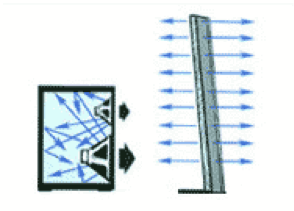



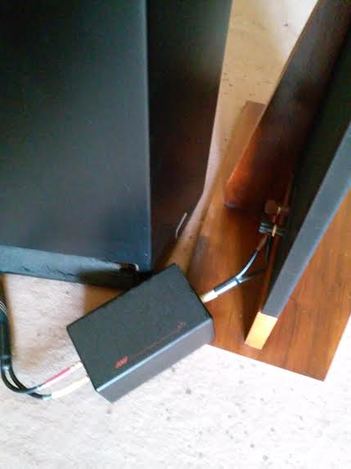

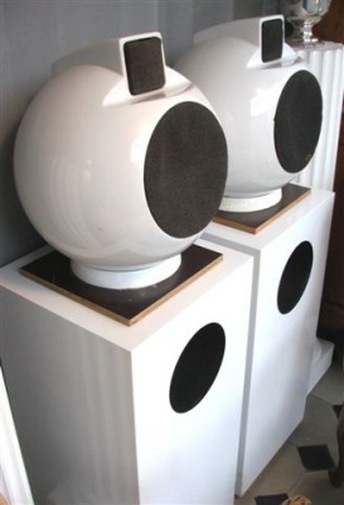






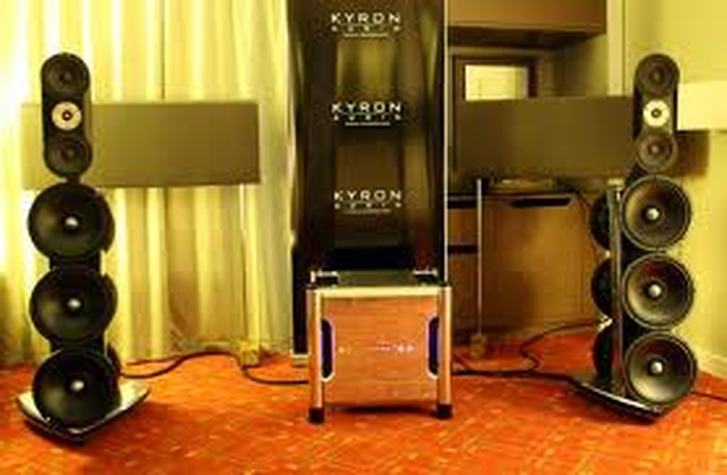
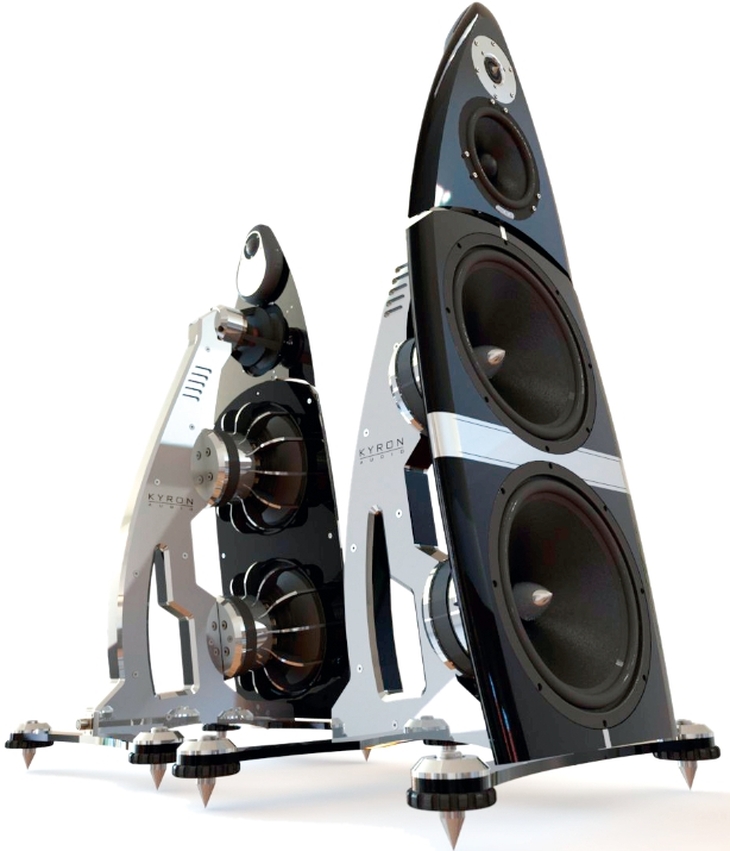

 RSS Feed
RSS Feed
